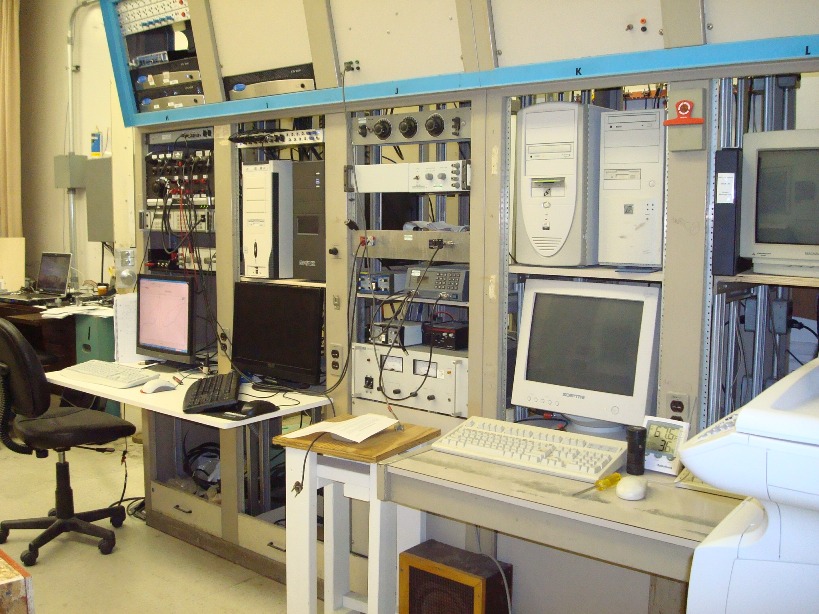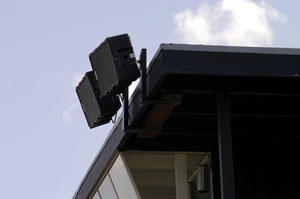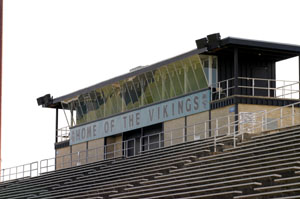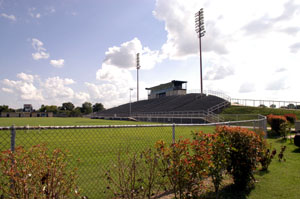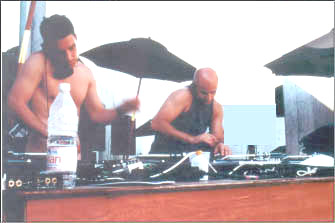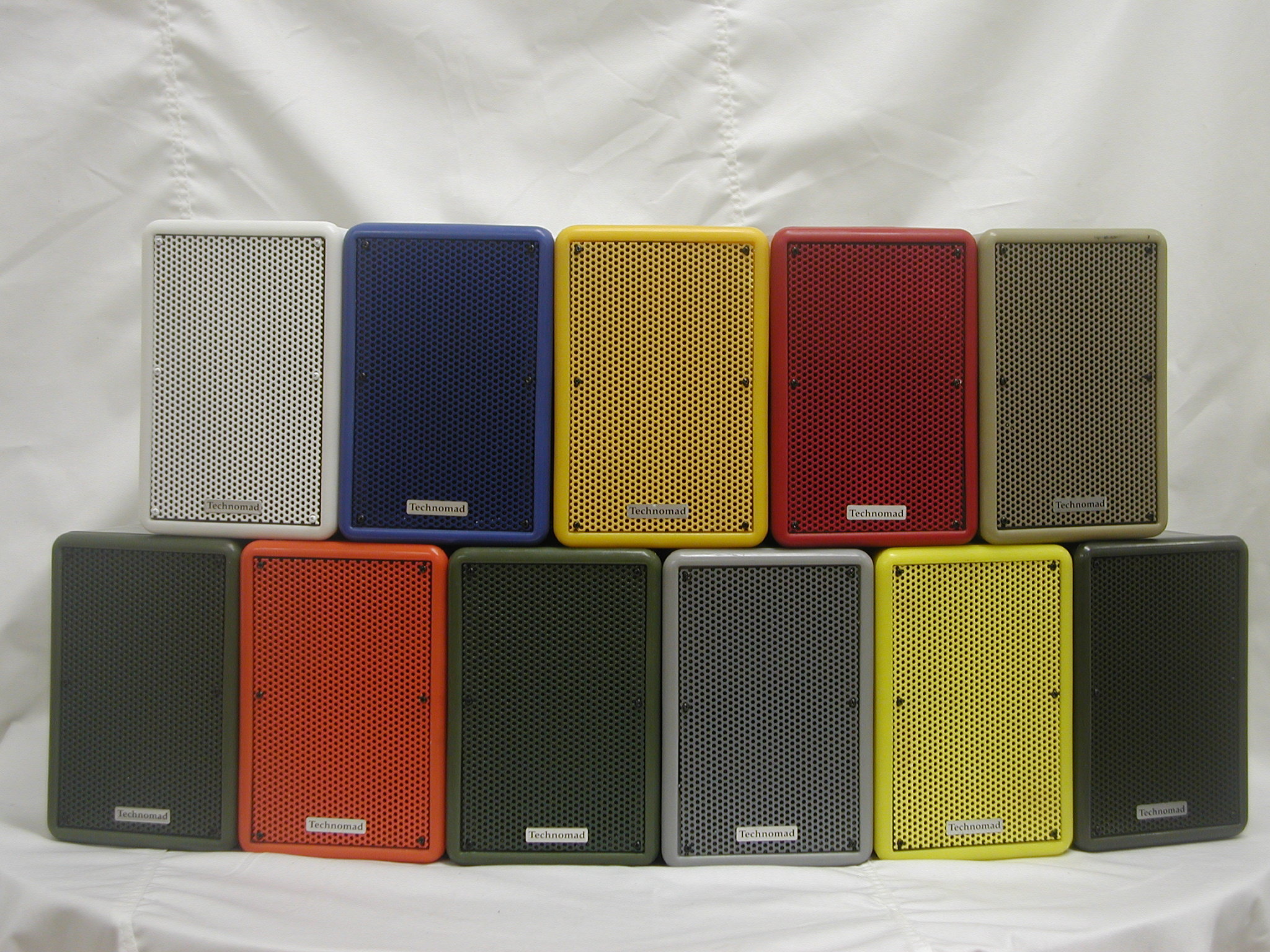Few people have visited Los Angeles without stopping at one of the most famous restaurants in the country; Gladstone’s Malibu. Gladstone’s originally opened in 1972 as a small restaurant in nearby Santa Monica Canyon and moved in 1982 to its current location, on the beautiful shores of the Pacific Ocean on the Pacific Coast Highway. Gladstone’s is one of the top ten largest grossing restaurants in the United States and the single largest, as well as the top grossing, restaurant on the entire west coast. Gladstone’s, open 365 days a year, accommodates 750 people at a time, welcomes more than a million people each year, and serves more live Maine lobster than any other restaurant in Southern California. It has also just become even bigger and better after a $3 million renovation.
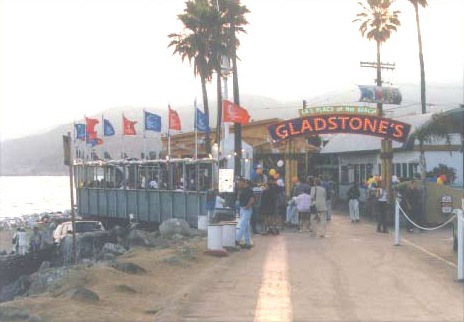 When you approach the entrance of Gladstone’s Malibu you immediately get a sense of a fun, casual, unpretentious, carnival atmosphere. As you enter the restaurant, there is a “Wall of Fame” where patrons can view a collection of celebrity photos taken at Gladstone’s over the years. A new bar area has been added to create the feeling of a true 1950s beach bar. The original dining area has been restored and boasts the largest collection of historical photos of the bay and local area. The dining experience in the new Outrigger Dining room is enhanced by the lofty 18-foot ceilings, 12-foot high windows, and the best unobstructed vista of the Pacific Ocean on the coast. There is also a back dining area called the “Movie Room,” which is a more intimate space, decorated with photos of movies that were made in the Malibu area starting with the original Inceville Studios of the early 1900’s, located where Gladstone’s now sits. The outdoor patio has an uninterrupted ocean view and a festive “boardwalk” feeling. The subtle wash of deck lighting on the water enhances the Oceanside dining experience.
When you approach the entrance of Gladstone’s Malibu you immediately get a sense of a fun, casual, unpretentious, carnival atmosphere. As you enter the restaurant, there is a “Wall of Fame” where patrons can view a collection of celebrity photos taken at Gladstone’s over the years. A new bar area has been added to create the feeling of a true 1950s beach bar. The original dining area has been restored and boasts the largest collection of historical photos of the bay and local area. The dining experience in the new Outrigger Dining room is enhanced by the lofty 18-foot ceilings, 12-foot high windows, and the best unobstructed vista of the Pacific Ocean on the coast. There is also a back dining area called the “Movie Room,” which is a more intimate space, decorated with photos of movies that were made in the Malibu area starting with the original Inceville Studios of the early 1900’s, located where Gladstone’s now sits. The outdoor patio has an uninterrupted ocean view and a festive “boardwalk” feeling. The subtle wash of deck lighting on the water enhances the Oceanside dining experience.
Gladstone’s has an expanded kitchen, bar, and a new building in front of the restaurant to service hungry diners on the popular front patio. The new $3/4 million Fish Market building tucks in behind the PCH deck with its own outside kitchen. With the outside kitchen, Gladstone’s staff can assign seating and provide quicker service to the deck. There are new bars and the fish cutting room, with live lobster and crab tanks, is replete with a large window where fresh fish cutting is exhibited.
SHEDWERKS:
“ShedWerks, as a business, essentially keeps my chops up,” Owner Bruce Maddocks quips. “I love the art of audio and designing new systems, regardless if they are multi-million dollar studios or high-quality sound systems in prestige landmarks, like Gladstone’s.” Based in Woodland Hills, California, ShedWerks, established in 1992, specializes in commercial and residential sound reinforcement system design, consultation, remodel, rebuild, original fabrication, and installation. Bruce also maintains his chops from his full-time gig as chief engineer of Capitol Studios in Hollywood, overseeing all the technical operations for the recording and mastering studios.
Capitol, Bruce points out, is constantly in the process of upgrading existing studios, or adding new studios, in the Capitol Tower every eight months. Bruce states, “A lot of it is remodeling and bringing the technology of the existing facilities into the new millennium. Since I do a lot of design work for DVD production and surround sound, I’m designing and redesigning facilities to deal with multi channel audio.”
Gladstone’s previous sound system had been in service, states Bruce, “I believe, probably about 17-odd years.” Continuing, Bruce points out, “Initially, when I went to do the site survey, I said, ‘Okay, let me see what I can reuse to try to keep a handle on the cost.’ First off, the process of the construction had already begun and a lot of the existing wiring just got cut, therefore, since no diagrams existed, I couldn’t physically trace the wires.”
As Bruce began to look at all the remaining components, like many sound systems, it appeared it had started out fairly small. Bruce observed, “Through the years different pieces got added to it, but not in a very cohesive manner. There were bits and pieces here, there, some stuff kind of tacked on in between.” Bruce quickly realized the restaurant had to install a completely new system. There was literally nothing out of the existing system to salvage, “except for the Yamaha five disc carousel CD player, and the DMX satellite music receiver,” Bruce adds.
Bids for the new sound system went out about midpoint in the construction. The Restaurant had put out bids to several vendors, and a lot of the proposals that came back, states Bruce, “Were for real typical, straightforward, generic restaurant sound systems. They were all pretty mundane, a lot of ceiling loudspeakers, with no real imagination put into any of the bids.”
One of the most important things Bruce did when putting the bid together was, “I spoke to the principals of the restaurant to find out what they wanted!” he chuckles. “Based upon the other bids that came in, it didn’t look as if any of the other bidders did that.” Continuing, Bruce says, “Gladstone’s wanted something that was a lot better than what they previously had installed. I believe the one thing that impressed them was my experience in designing studios, loudspeakers, and sound systems for studios and mastering facilities, as well as my sound design experience. I advised them I could incorporate my unique experience into a sound system design which would give them maximum impact, really rock at a fairly moderate level, and still operate as background. They keyed into coherency, articulation, intelligibility and the ability to cut through without being obtrusive. This intrigued them a lot.”
The dollar amounts on even two bids, for the most mundane and ‘generic sound systems’ have a tendency to fluctuate dramatically. Even though Gladstone’s was investing three million dollars into expanding and upgrading this landmark restaurant, money was an object. Bruce states, “It’s fairly safe to say that any of the sound system bids were probably the smallest dollar amount expenditure for the new construction. Even though I had management talked-up on a studio quality, high-fidelity system, every aspect of the construction was under financial scrutiny.”
ShedWerks entered the project midway through construction, and to make matters worse, the restaurant was still open for business during the entire rebuild period. To stay out of the way, ShedWerks had to pre-assemble and test all the racks in the shop, and then deliver and work on an off-hours schedule. The installation was overseen by Bruce, with Eric Malin from Malin construction taking on all of the mechanical installation work. Sallie Arnold from “Get Wired” did all of the wiring interface work on the project. A lot of the install took place mostly after 1 or 2 a.m. and the three person crew would work straight through until almost 4 o’clock in the afternoon, all the while trying to remain unobtrusive to the other construction trades.
THE GEAR: LOUDSPEAKERS
Working from the loudspeakers backward, Bruce researched loudspeakers based upon size, output, and fidelity. While researching replacement loudspeakers for an entirely different job – the echo chambers at Capitol Studios, which are large, damp, dank, musty, and occasionally moisture-laden underground rooms – Bruce came across the Technomad WeatherTech Vienna 16 loudspeakers. “We use these rooms in the recording process for their natural reverberation characteristics. But, the room environment wrecks havoc on loudspeakers. Totally unrelated to what I had going on with Gladstone’s, I got a hold of the Technomad Vienna 16 loudspeakers and even before I could install them in the echo chamber, I was blown away by the sound quality.”
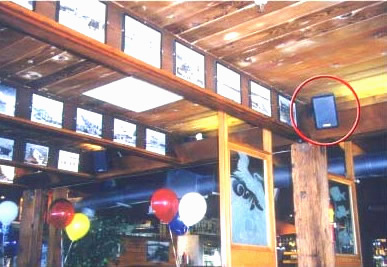 Since Bruce had been evaluating low-profile loudspeakers for Gladstone’s, he decided to take a listen to Technomad’s new Vernal 15; a 60 watt powerhouse featuring a 5″ polymer mid/bass driver under a 1″ diameter ceramic high-frequency compression driver, on a 90° X 90° horn. “The Technomad Vernal is the speaker I was looking for,” states Bruce. “As equally impressive as the horn is at cutting through the background noise generated by 750 people, as well as the wind and the sound of the surf, the low-end on the Technomad Vernal 15 is very pronounced and detailed from a cabinet that is only nine by six by six inches. The Technomad Vernal 15 was going to be the primary loudspeaker of the overall sound system.”
Since Bruce had been evaluating low-profile loudspeakers for Gladstone’s, he decided to take a listen to Technomad’s new Vernal 15; a 60 watt powerhouse featuring a 5″ polymer mid/bass driver under a 1″ diameter ceramic high-frequency compression driver, on a 90° X 90° horn. “The Technomad Vernal is the speaker I was looking for,” states Bruce. “As equally impressive as the horn is at cutting through the background noise generated by 750 people, as well as the wind and the sound of the surf, the low-end on the Technomad Vernal 15 is very pronounced and detailed from a cabinet that is only nine by six by six inches. The Technomad Vernal 15 was going to be the primary loudspeaker of the overall sound system.”
Twenty Technomad Vernal 15, 70-volt transformer version loudspeakers were utilized for the main dining and Movie Room a private function dining area. Bruce states, “I was able to get the best overall coverage by installing the Technomad Vernals along the perimeter of the room and the focusing the dispersion pattern of the Vernals into every alternate bay within the main dining room. That way, I was able to get full coverage without any drop-outs.”
The bar and two dining areas off the main dining room were also fitted with nine suspended Sound Tube RS50 loudspeakers. The Omni-directional pattern provided large areas of coverage from the high ceilings and their very low profile did not impact the cosmetically clean decor of the rooms. The Outrigger room was also fitted with three RS50 loudspeakers, suspended eight feet down from the twenty foot plus ceilings.
“In the Movie Room it was pretty straightforward installation of six Technomad Vernals,” Bruce states. Three Technomad Vernal 15 loudspeakers are on the opposite walls, at the eight-foot ceiling height. “Since the Movie Room is a party or private function area, I put a high concentration of loudspeakers in there on a separate zone,” Bruce continues. “This room can produce a fairly high impact party atmosphere that is completely separated from the rest of the restaurant.”
Keeping costs down, Bruce did not add any subwoofers to the dining rooms. “I found that by utilizing a lot of the boundary effect, proximity to walls and ceilings, it wasn’t really necessary to add any subs. Since it is a 70-volt system, my overall low-end is limited by nature of the transformers and the amps, but I am very impressed that the Technomad Vernal 15 loudspeakers produce an incredible amount of low-end from such a small cabinet.”
But the lack of subwoofers was not a detriment to the overall sound quality of the system. “I use very selective compression and equalization techniques that I’ve picked up through the process of recording and mixing music. So, I just apply those practices into the system and I can actually make all of the music cut through without it being overbearing or obtrusive.”
For the exterior Ocean Deck area, Bruce installed two Technomad Vernal 15 loudspeakers and three Sound Tube Storm Tech ‘Sea foam Green’ loudspeakers in ‘Sea foam Green’. States Bruce, “The ‘Sea foam Green’ finish matches the new awning and exterior finishes.” Due to the large open area of the on-the-water deck, the three Omni-directional loudspeakers were mounted to the existing poles that run down the middle of the deck, simplifying the ‘non-directionality critical’ aspect of the installation. The two exterior Technomad Vernal 15 loudspeakers were installed firing out onto the deck area, filling in walkways and outdoor waiting areas.
THE RACK
A wall mounted, locking 27 rack spaces, ZERO steel case provides a home for all of the rack-mount equipment. The Desk Doctor Controller/Interface was mounted at the top of the rack at eye level, as the only adjustments that would be needed on a daily basis would be the selection of program sources and their associated zone levels. Bruce installed the existing Yamaha 5 CD carousel player below the Desk Doctor Controller. The CD player would be used typically for the Movie Room to provide requested or even guest-provided music. Channel selection on the DMX satellite receiver, installed below the CD player, is made by either the front panel selector or by remote control. The ARX Systems Quadcomp II, four two-channel ART equalizers, the Rane MA-6 and the QSC amp rounds out rack. One rack space is left open between the Rane and QSC power amps as ventilation space. A 2 rack space AC Surge protector and outlet distributors were mounted in the bottom of the rack.
A plywood panel was affixed to the rear inside of the rack to strengthen the wall mounting, as well as facilitated the mounting of the 70V 100 watt output transformers for the RANE amp. All of the equipment wiring interface was completed in ShedWerks’ Woodland Hills shop before delivery to the location. This allowed Bruce and staff to thoroughly test the system dial in some rough compression and equalization settings by simulating some of the install. Once on site the rack was wall mounted and the speaker wire/paging interface was connected, fine tuning of equalization, paging balance and compression was quickly completed. Once all the electronic setting was finalized, security covers were installed on various pieces of signal processing equipment to prevent prying hands from resetting equipment.
THE POWER AND FRONT END
Bruce states, “I’ve set-up the restaurant into eight separate zones and for that I went with two amplifiers. The first amplifier is the new QSC CX series 302V amplifier. One channel of the QSC 302V is running the Main dining room and then the other channel is running the Ocean deck. The second amplifier is the RANE MA6S six-channel amplifier.”
Bruce is responsible for the design of the system’s custom-controller paging/interface with fabrication of the unit by Bruce Millett of Burbank-based, The Deck Doctor. “It’s a fairly interesting interface,” Bruce states. “I’m used to working in a balanced plus-four audio environment. I like to have the additional operating level as well as the common mode rejection you receive when working balanced. The first stage of the paging interface is eight minus 10 unbalanced inputs. You get your stereo outputs from the Yamaha multi-disc CD player or DMX satellite receiver, and it converts the eight unbalanced minus 10 feeds into it into four mono balanced outputs. Working with balanced audio and a proper grounding scheme really reduces the headaches associated with potential ground loops. The interface box produces level control for the four individual sources, which is then sent to the compressors. The processed signals are returned to the controller were they are routed to the source selector on the eight individual zones. Every single zone can then select whatever it wants to listen to, and then each zone has its own level control. The output of each zone is then sent to an equalizer and then to the power amps.”
Bruce continues, “I constructed a two-area paging system: one for inside the restaurant and one at the paging station for the outside deck areas of the restaurant. The user can select between any of the eight zones or do an ‘all zone’ call. Another aspect of the system was to insert all of the paging after the level control for each individual zone. A 15 dB program ‘duck’ level is activated with each page. That way I can have consistent paging levels throughout all of the zones no matter how they set the music level.”
“One of the things that happened previously in the restaurant was that they were using auto tap transformers,” Bruce recollects. “So in the bar area, if they wanted to listen to the television, they would turn the music loudspeakers down. When a page was announced, you never heard it in the bar, and that’s the area where everybody’s waiting to be seated. That didn’t quite work, since whenever the sound system was turned down, the guests were missing their table calls. Now, by using a paging interface that works after all of the individual level controls, no matter where they set the music, paging, now, always comes through.”
For “people protection” Bruce utilized an ARX Systems single-rack space, four-channel Quadcomp II limiter/compressor. Bruce states, “It’s pretty straightforward. Very clean, very fast, and very simple to use. I prefer this unit over others because it has four compressor/limiters in a single rack and in this job; rack space was at a premium.” Also installed were four of the ART Model 341 equalizers. “So,” Bruce states, “I’m able to do just a little bit of equalization and balance in each one of the zones.”
Bruce notes, “Obviously, since Gladstone’s is right on the Pacific Ocean, the environment is rather harsh. You’re looking at sea spray, wind, fog, rain, it’s a highly corrosive environment for electronics, I settled on the Technomad Vernal 15s, primarily because they were the best sounding speaker for the application. Also, out of all the loudspeakers I was evaluating for the interior areas, the clean cosmetic design and low profile of the Vernal best suited the design. Granted, the interior dining area, even with all the windows open, is not as harsh of an environment as the Ocean Deck, so I really had my options opened for the loudspeakers.”
Reflecting on his accomplishment, Bruce states, “The sound system is really even. One of the things I wanted to accomplish was to make it so you could walk from the deck entrance of the restaurant, to the bar, all through the dining rooms, and not hit a dead zone. It took a lot of work to get it right, but by doing the walk-through, and running back and forth, not to mention a lot of folks with good ears and walkie-talkies, we were able to get the whole system very even so there’s no radical changes, even as you move from zone to zone to zone.”
Contact ShedWerks: ShedWerks Inc.
4411 Brookford Avenue.
Woodland Hills, CA 91364.
E-mail: shedwerks@aol.com.
Fax (818) 225-1309.

